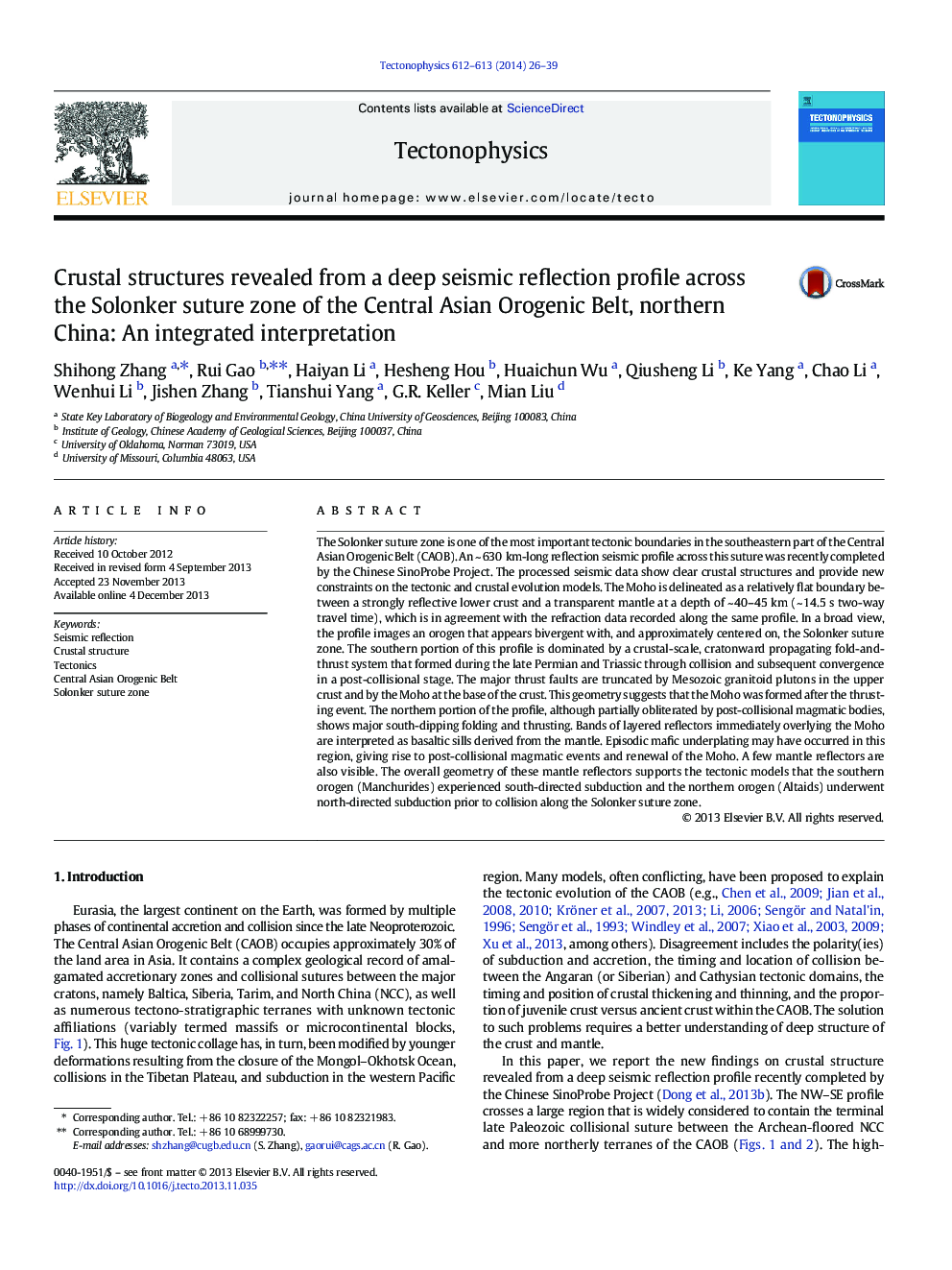| کد مقاله | کد نشریه | سال انتشار | مقاله انگلیسی | نسخه تمام متن |
|---|---|---|---|---|
| 4692076 | 1636775 | 2014 | 14 صفحه PDF | دانلود رایگان |

• A new reflection seismic profile crossing the Solonker suture was completed.
• The seismic profile images an orogen with bivergent crustal thrusting system.
• Regional Moho is fairly continuous and flat beneath the craton and orogen.
• A few reflectors beneath Moho likely reflect relict subduction.
The Solonker suture zone is one of the most important tectonic boundaries in the southeastern part of the Central Asian Orogenic Belt (CAOB). An ~ 630 km-long reflection seismic profile across this suture was recently completed by the Chinese SinoProbe Project. The processed seismic data show clear crustal structures and provide new constraints on the tectonic and crustal evolution models. The Moho is delineated as a relatively flat boundary between a strongly reflective lower crust and a transparent mantle at a depth of ~ 40–45 km (~ 14.5 s two-way travel time), which is in agreement with the refraction data recorded along the same profile. In a broad view, the profile images an orogen that appears bivergent with, and approximately centered on, the Solonker suture zone. The southern portion of this profile is dominated by a crustal-scale, cratonward propagating fold-and-thrust system that formed during the late Permian and Triassic through collision and subsequent convergence in a post-collisional stage. The major thrust faults are truncated by Mesozoic granitoid plutons in the upper crust and by the Moho at the base of the crust. This geometry suggests that the Moho was formed after the thrusting event. The northern portion of the profile, although partially obliterated by post-collisional magmatic bodies, shows major south-dipping folding and thrusting. Bands of layered reflectors immediately overlying the Moho are interpreted as basaltic sills derived from the mantle. Episodic mafic underplating may have occurred in this region, giving rise to post-collisional magmatic events and renewal of the Moho. A few mantle reflectors are also visible. The overall geometry of these mantle reflectors supports the tectonic models that the southern orogen (Manchurides) experienced south-directed subduction and the northern orogen (Altaids) underwent north-directed subduction prior to collision along the Solonker suture zone.
Figure optionsDownload as PowerPoint slide
Journal: Tectonophysics - Volumes 612–613, 4 February 2014, Pages 26–39